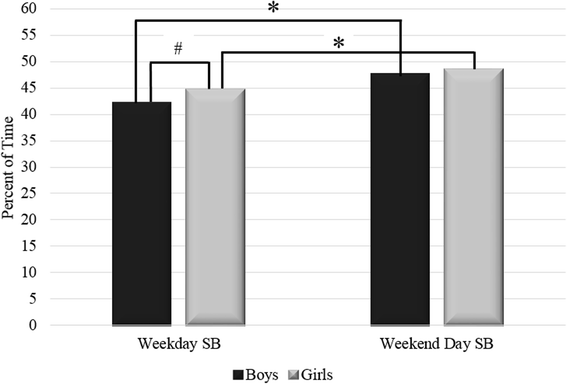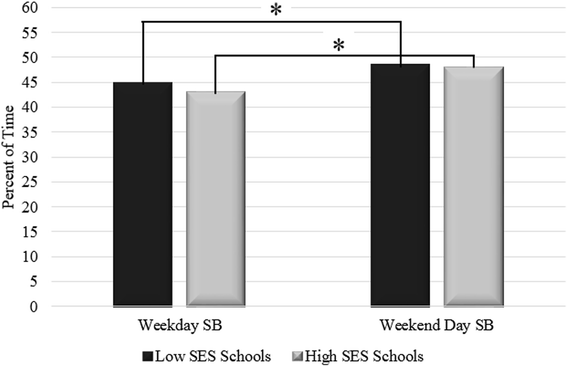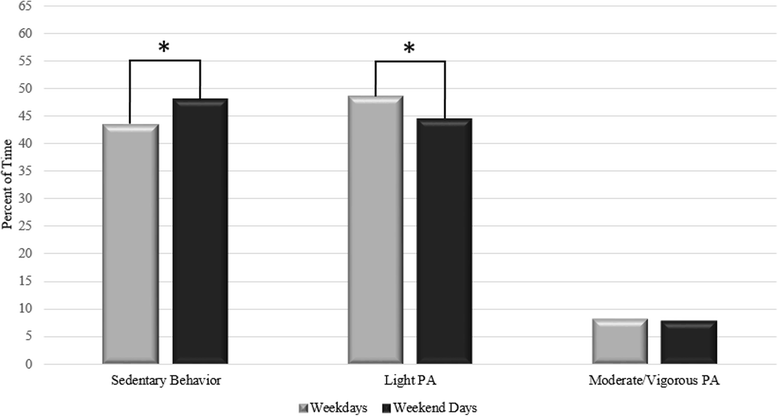In-school versus out-of-school sedentary behavior patterns in U.S. children
- PMID: 27437117
- PMCID: PMC4944493
- DOI: 10.1186/s40608-016-0115-3
In-school versus out-of-school sedentary behavior patterns in U.S. children
Abstract
Background: This study contributes to the literature by using accelerometers to describe sedentary behavior (SB) patterns in US children. The purpose of this study was to examine SB patterns in fifth-graders by specifically focusing on in-school versus out-of-school SB patterns to identify when (during the school day or outside of the school day) interventions should take place in order to decrease SB in children.
Methods: Data were collected from 206 fifth-graders (9-11 years old) in the Cherry Creek School District in metro Denver, Colorado (USA) during the spring of the 2010-2011 school year and fall of the 2011-2012 school year. Children wore Actical accelerometers continuously over an eight-day period. Data were analyzed using Wilcoxon rank tests, paired samples t-tests, and independent samples t-tests. Awake time was 6 AM-11 PM. We compared the percent of time spent in SB before school, during school, at recess/lunch and after school, as well as differences between boys and girls, and between children from low and high socioeconomic status schools. Children were classified as 'non-sedentary' or 'sedentary' if they participated in <360 min or ≥360 min per day of SB, respectively and were classified as 'inactive' or 'active' if they participated in <60 min or ≥ 60 min per day of MVPA, respectively. Cross-tabs were used (and Fisher's exact test) to identify the proportion of children in the following categories: 1) non-sedentary/inactive; 2) sedentary/inactive; 3) non-sedentary/active; and 4) sedentary/active. Statistical significance was set at p < 0.05.
Results: All children (boys and girls and children from low and high socioeconomic status schools) participated in significantly more SB outside of school hours versus during school hours and on weekend days compared to weekdays (p < 0.001). Girls participated in significantly more SB than boys during weekdays (p = 0.015). The majority of children (65.3 %) were classified as sedentary/active.
Conclusions: Given that children appear to be more sedentary during the weekend, where more opportunities to be physically active with the whole family can easily be implemented, future interventions should focus on time periods outside of school hours in order to decrease sedentary behavior and increase light physical activity in particular.
Keywords: Accelerometers; Obesity; Pediatrics; Physical activity; Sedentary behavior.
Figures





References
Grants and funding
LinkOut - more resources
Full Text Sources
Other Literature Sources

